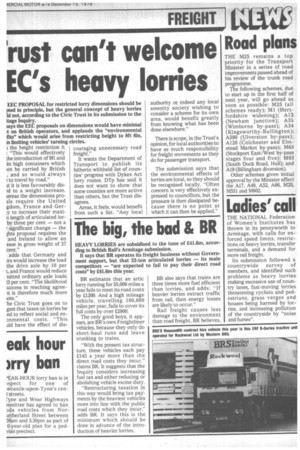The big, the bad & BR
Page 19

If you've noticed an error in this article please click here to report it so we can fix it.
HEAVY LORRIES are subsidised to the tune of £41.6m, according to British Rail's Armitage submission.
It says that BR operates its freight business without Government support, but that 32-ton articulated lorries — its main competitors — "are expected to fail to pay their direct road costs" by £41.6m this year.
BR estimates that an artic lorry running for 55,000 miles a year fails to meet its road costs by £1200. And a high mileage vehicle, travelling 100,000 miles per year, fails to cover its full costs by over £2900.
The only good boys, it appears, are BR's own Freightliner vehicles, because they only do short-haul runs and leave trunking to trains.
"With the present tax structure, these vehicles each pay £145 a year more than the direct road costs they incur," claims BR. It suggests that the Inquiry considers increasing fuel tax and either reducing or abolishing vehicle excise duty.
"Restructuring taxation in this way would bring tax payments by the heaviest vehicles more into line with the public road costs which they incur," adds BR. It says this is the minimum which should be done in advance of the introduction of heavier lorries. BR also says that trains are three times more fuel efficient than lorries, and adds: "If heavier lorries extract traffic from rail, then energy losses are likely to occur."
Rail freight causes less damage to the environment than road freight, BR believes,




















































































































